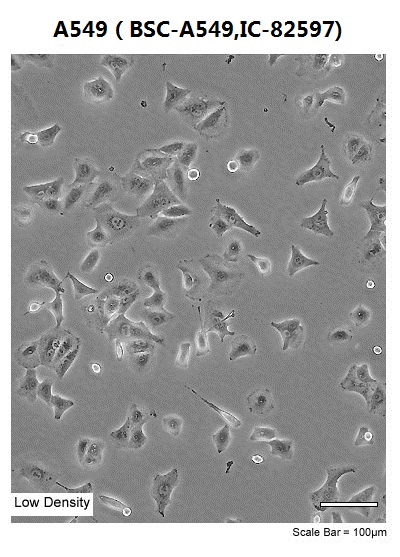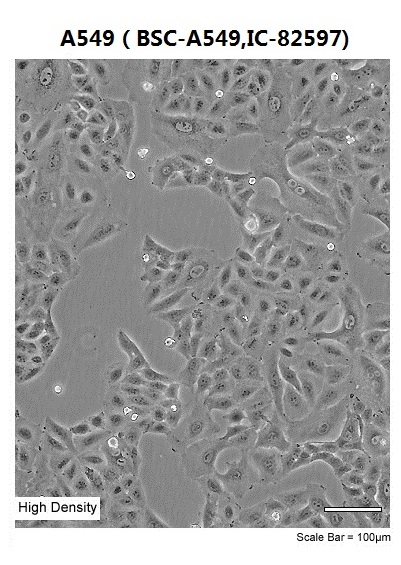

Overview
| Organism | Homo sapiens, human |
|---|---|
| Tissue | lung |
| Cell Type | epithelial |
| Product Format | frozen |
| Morphology | epithelial-like |
| Culture Properties | adherent |
| Biosafety Level |
1
Biosafety classification is based on U.S. Public Health Service Guidelines, it is the responsibility of the customer to ensure that their facilities comply with biosafety regulations for their own country. |
| Disease | Carcinoma |
| Age | 58 years |
| Gender | male |
| Ethnicity | Caucasian |
| Applications | This cell line is a suitable transfection host. |
| Storage Conditions | liquid nitrogen vapor phase |
Properties
Background
| Complete Growth Medium |
The base medium for this cell line is ATCC-formulated F-12K Medium, Catalog No. 30-2004. To make the complete growth medium, add the following components to the base medium: fetal bovine serum to a final concentration of 10%. |
|---|---|
| Subculturing |
Volumes used in this protocol are for 75 cm2 flask; proportionally reduce or increase amount of dissociation medium for culture vessels of other sizes. Corning® T-75 flasks (catalog #430641) are recommended for subculturing this product.
Interval: Maintain cultures at a cell concentration between 6 X 103 and 6 X 104 cell/cm2.
Subcultivation Ratio: A subcultivation ratio of 1:3 to 1:8 is recommended
Medium Renewal: 2 to 3 times per week
|
| Cryopreservation |
Freeze medium: Complete growth medium supplemented with 5% (v/v) DMSO
Storage temperature: liquid nitrogen vapor phase
|
| Culture Conditions |
Atmosphere: air, 95%; carbon dioxide (CO2), 5%
Temperature: 37��C
|



